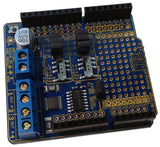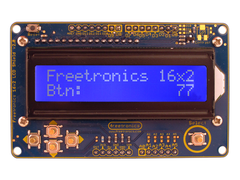After playing the board game "Looping Louie", the folks from the GreatScottLab decided to take the game further and add an Arduino-powererd control panel to the motorised aeroplane with is the focus of the game.
With a simple Arduino-compatible motor control circuit, and a neat user-interface based around a character LCD - the players can increase the difficulty of the game (or make it much easier) by controlling the speed of the rotating plane. With such a simple DC motor for the game, it was begging to be modified - which is demonstrated well in the following video:
There's a lot of opportunity for increased gameplay or unintended effects - so either way, check out the project page to learn how. And for more, we're on facebook, Google+, and twitter - so follow us for news and product updates as well.
If you're looking into starting with Arduino and robotics, such as controlling a stepper motor (or DC motors) from your Arduino or compatible, check out our new HBRIDGE: DC/stepper motor shield. Based around the powerful Allegro A4954 H-bridge driver IC you can control two DC motors with complete ease, or one bipolar stepper motor. With connections for external power management, a complete beginners' guide and documentation - motor control couldn't be any easier. For more information and to order, visit the HBRIDGE: page.























